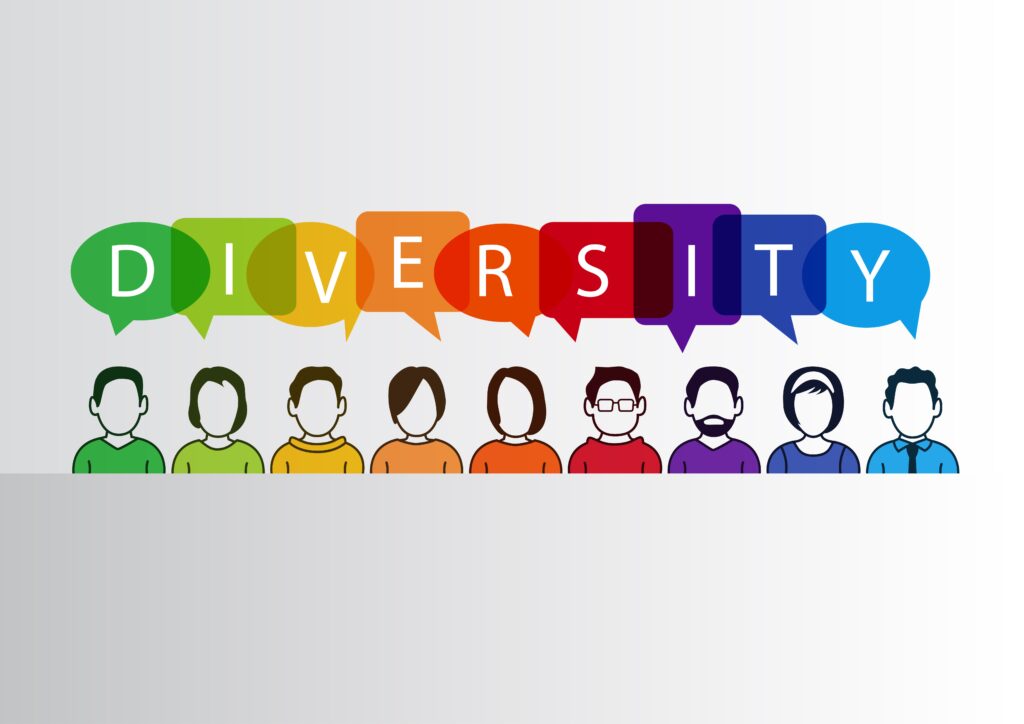“Diversity” has become synonymous with hiring people of a different skin color, gender or sexual orientation. Sadly, this mindset completely undercuts the whole purpose of having a diverse work force in the first place. Too often businesses look at mere demographics to determine whether they are achieving diversity or not. Here is what true workplace diversity is, how businesses are missing the mark and how to genuinely achieve it.

Shutterstock Licensed Photo – By a-image
1. Critical business diversity is not a diversity of bodies, but of thought
Just hiring people that look or act differently than the core dynamic does not actually create the most important kind of diversity. Too often, businesses hire individuals that do not fit the pattern or the “norm” for the company, but then just turn around and force them to comply with the norm. That pressure to comply with the norm creates homogeneity rather than diversity.
2. Diversity of thought is created by having radically different experiences
No matter how hard he might try, a man will never fully understand what it means or feels like to walk through life as a woman. Similarly, a white person can never genuinely know what it feels like to be a person of color in a predominantly Caucasian society. Even if a Caucasian were to travel to a place where their skin color puts them in the minority, they will still not know what it means to live their life as a person of color.
Creating a diverse workplace is about benefitting from vastly different worldviews that have been shaped by vastly different experiences.
3. True workplace diversity is critical if you want to reach a diverse world
Too often, we tend to believe that if we have a modicum of understanding of what it means to live another person’s life, then we are qualified to adequately judge or interpret what it means to be that person. We can’t. And that is exactly why workplace diversity is so important.
If you want to reach a broad consumer base, you have to understand the mentality of those consumers. If you are not a member of a certain consumer demographic, you cannot understand what will best reach or appeal to them.
Also Read
4. Diversity cannot be achieved when a diverse workforce must comply with narrow norms
Nike has dominated headlines recently as women are leaving the company in droves. In a world where women’s activewear is becoming a booming business, one of the biggest names in activewear is struggling – and has been for years. Why? Because women were hired, they were not given free reign to create products and marketing strategies specific to their own demographic.
Nike is a glaring example of what happens when men think they know better what women want. In 2002, Nike made a bid to become a serious competitor in the women’s sports market. How did they do it? By hiring a man to design women’s shoes.
5. Diversity is not achieved by a shift in hiring, but by a shift in culture
C-Suite executives often rise through the ranks by knowing more than anyone else in the room. Diversity in the workplace is largely difficult to achieve because it involves high-ranking executives to not only admitting what they don’t know but what they can never know.
It is a pretty safe bet that when Apple wanted to market their products in Japan, they didn’t hire an American firm to create their marketing. In addition, they most likely did not veto marketing ideas because they didn’t fit in with their Western worldview of what kind of marketing works best. They most likely did their research, hired the best and then trusted them to do their jobs.
This is a somewhat easier strategy to adopt when you are hiring someone outside of your company, but far more difficult when it comes to your own employees.
As difficult as it may be to achieve, workplace diversity is important for many reasons:
- Better customer engagement through employee representation
- Better marketing and branding for a more diverse consumer base
- Better innovation and higher performance among different sectors
- Higher employee retention
- Better satisfaction among employees and a better company culture
Ways to achieve a diverse workforce:
- Hire remote workers: “Groupthink” is almost unavoidable in communal workspaces. While some homogeneity is inevitable among teams, distance can help negate some of it.
- Hire from different areas: As hard as it might be on employees to move, you will inherently create a more diverse workforce by hiring from different geographical regions.
- Create a culture that values diversity: The biggest obstacle to diversity is the pressure on employee to all act, think or behave in the same way. Employers cannot expect “outside the box” thinking and then subtly dismiss any ideas that don’t fit within the box.
- Create more “blinds” in hiring: The longer you can keep personal details about a potential employee from affecting your decisions, the more likely you will be able to make them without bias.
- Admit to personal biases and discover what they are: There are a number of different resources that can help hiring managers and other executives determine their personal biases. Use them.
Workplace diversity was not as critical when local businesses largely marketed their products to local consumers. In a global marketplace, however, it’s important not just to understand the needs of consumers just like you, but consumers vastly different from you. Having a diverse work force can help accomplish this – if you trust them to know more than you.
